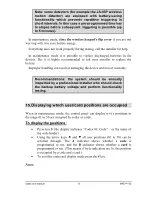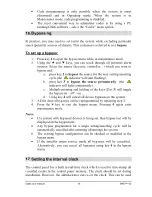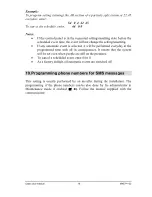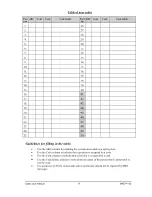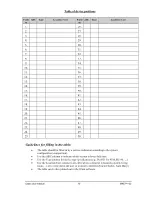
event and when. As a factory default, all access codes (cards) are blank. To define
a user code, enter the following sequence:
* 6 xxxx nn yyyy
where
xxxx
is the master code
nn
is the user code index (from 01 to 50)
yyyy is the new user code. By inserting 0000 the code in the nn
position will be erased
Example:
If the master code is 1234 and user 3’s new code should be 5277, enter:
* 6 1234 03 5277
Alternatively, assign a card to user 3 by entering:
* 6 1234 03 and present user 3’s card
Notes:
•
Both a
code and a card
can be assigned
to every position
•
If you want to assign a code and a card to position nn set the code and
then on the same position the card (or vice versa)
•
If the system is programmed to require card verification by code
(
5.), a user who has a code and card set always uses both (no
matter which order). If the user has only a code or a card then
verification does not concern him.
•
If the administrator records the codes on the table in the appendix of this
manual it is necessary to keep it hidden in a safe place. Better would be
to use and store them in the Olink software (access is encrypted)..
•
The installer sets the reaction of the system to each code and the code
assignments to each section (A,B,C).
•
A code cannot be assigned to 2 different positions. Code relocation
can be done by deleting the code (card) and, subsequently,
programming it to a new position.
•
For security reasons, do not use codes which are easily predictable
such as four equal digits, birth dates, company personal numbers, etc.
•
The administrator can check which positions (01 to 50) are occupied
by a code or card in maintenance mode – see 15.
•
To erase a code without knowing its nn position use sequence
∗
6
master code (card) 00 code
•
To erase all codes and cards set
∗
6 master code (card) 00 0000
.
The master code (card) will not be effected.
Oasis user manual
11
MKE22102

















